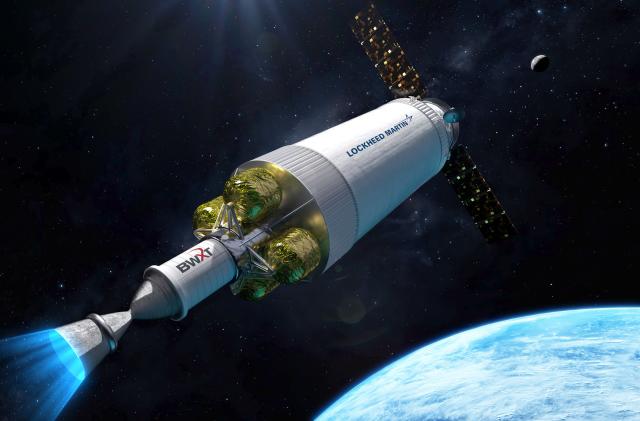
NASA, America’s leading space agency, is seeking to develop a nuclear rocket capable of transporting humans to Mars and beyond. The space agency and the Defence Advanced Research Projects Agency, or DARPA, revealed on Wednesday that Lockheed Martin has been chosen to develop, build, and test nuclear fission-based propulsion. DRACO, or Demonstration Rocket for Agile Cislunar Operations, is anticipated to cost up to $499 million. NASA announced that a nuclear-powered rocket will be tested in space as early as 2027 as part of the plan.
“Working with DARPA and companies across the commercial space industry will enable us to accelerate the technology development we need to send humans to Mars,” said NASA Deputy Administrator Pam Melroy. “This demonstration will be a crucial step in meeting our Moon to Mars objectives for crew transportation into deep space.”
According to rumors, the DRACO engine will be made up of a nuclear reactor designed and produced by BWX Technologies of Lynchburg, Virginia. The reactor would heat hydrogen from -420 degrees Fahrenheit to 4,400 degrees Fahrenheit, with the hot gas spewing out of a nozzle to generate propulsion. A nuclear-powered spaceship, in particular, will make space flights speedier and safer for the crew. Reducing transit time is critical for human trips to Mars. This is due to the fact that longer transit times imply more supplies and more robust systems.
A nuclear-powered rocket would enable faster trips to the Red Planet
“Nuclear propulsion is a key capability on NASA’s roadmap to send astronauts to Mars. A nuclear-powered rocket would enable faster trips to the Red Planet, making missions less complex and safer for the crew,” said NASA. “This type of engine requires significantly less propellant than chemical rockets, so missions would be able to carry additional scientific equipment.” The current technology allows for the 225 million-kilometer average distance journey from Earth to Mars to be completed in about seven months and that too every 26 months when Mars and Earth are close enough.
While the projected time for employing a nuclear thermal rocket engine is unknown, according to NASA Administrators, it would allow astronauts to “travel to and from deep space faster than ever before.” In addition to the DRACO program, NASA is presently collaborating with the Department of Energy and other industry players on space nuclear technology programs such as Fission Surface Power.
